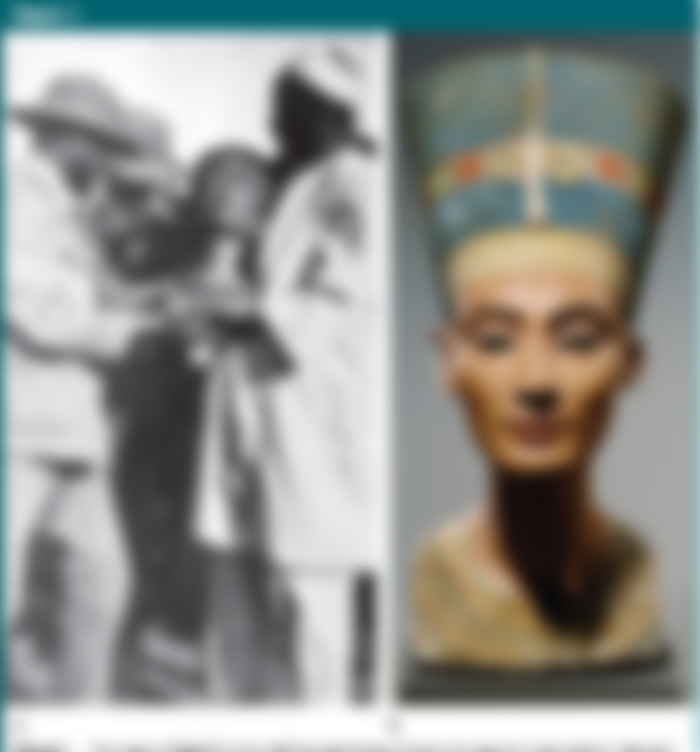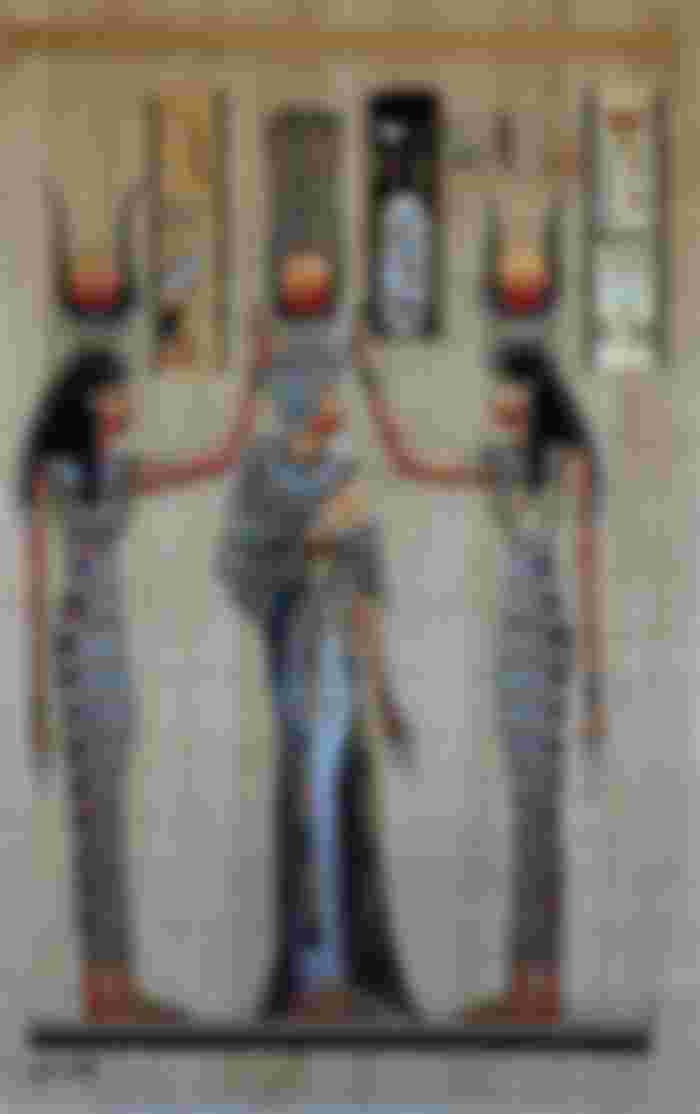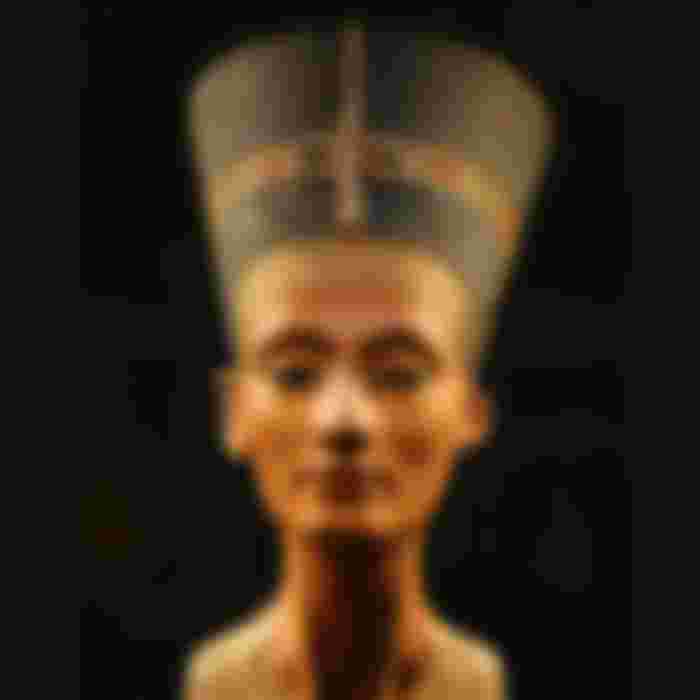According to the tradition of Egypt, in order to survive on the throne, Nefertiti, within ninety days, had to find a worthy and noble husband - and such did not exist in the deserted Akhenaten. So she fell into utter despair.
Becketton returned to Thebes immediately after her father's death. The fate of the other daughters is unknown, while only Meritaton, fragile and tender, remained with her mother until the end.

The deadline was slowly running out, and Teja and Horenheb were now openly rejoicing. How did Nefertiti feel? It is known that she and Meritaton moved from the palace to the northern, deserted part of the city, with a couple of servants and a sculptor. This sculptor will make a bust of Nefertiti in color, which is now in the Berlin Museum. We learned from her what the greatest queen in the history of Egypt looked like. She was unearthly beautiful, and her character will, in later times, be drawn and poured around the world in millions of copies.

The ninety-day deadline had expired. Nefertiti was 37 at the time and was in full bloom of her beauty. However, she fell into the blackest despair, because this brave and extremely intelligent woman (Sinuhe) had no way out. We can only imagine what position she was in. Lonely, against the whole world, Nefertiti and her daughter Meritaton spent sleepless nights in the ghostly desolate Achaestaton, listening to the unbearable silence and staring into the darkness full of shadows and spies. The signs were not good at all, because this was not her people, this was not her country, and here were not her dreams…

Therefore, in a spasm, Nefertiti decided to take a completely hopeless step… She barely found a loyal servant, to whom she entrusted a personal message - a short letter to her parents in Mitana, in which she begged them to urgently send her a prince for a husband. However, this step was pure self-deception because it took the horseman three months to ride to get to that land and so much more to get back.
Two thousand years later, at the very exit from Egypt towards Arabia (Yom suf), archaeologists found the skeletal remains of a horse and a horseman, who was still holding a letter (papyrus) in his hand in a small and dry cave. It is obvious that Teja and Horenheb did not sit idly by, but sent assassins after the messenger. They did not even bother to take his letter, they were so sure of the success of their endeavor. At the end of the letter was only a signature:
Damunancu… (Queen…)
And that was the end of this terrible drama.

We know from history that after Akhenaten, Tutankhamun sat on the throne, a child of Pharaoh, whom the governors, Thea and Horenheb, replaced until adulthood. Tutankhamun did not live long after his enthronement. When archaeologists found his mummy, and all the gold in the tomb, they saw that he had been killed in his sleep, a small one, because they had found a large hole in his head, in the cranial part.

What happened to Nefertiti in the end? Many studies and books have been written about this issue, numerous hypotheses have been put forward, which can all be reduced to one - that she failed in her plan, and was killed with great hatred and buried in some unworthy place. Her grave has not been found to date.
But that's not the end of the story.
Unexpectedly, in the 18th century, the sale of the royal ring from Nefertiti's hand and an empty sarcophagus with Kia written on it were recorded in Cairo. Buyer and seller have never been identified.

According to Philip Vandenberg (Nefertiti), it is most likely that, after the expiration of ninety days, Nefertiti and Meritaton were executed and then buried - but not in the traditional Queen's Valley, but somewhere in the desert, without any grave markers. The grave robbers, who have always been there, seem to have found that lonely tomb of Nefertiti, in which only a ring and a sarcophagus were worth anything, while they left the mummies. They sold the ring and the coffin, but their owner has not announced himself to this day.
And then, in 1960, archaeologists found Akhenaten. According to them, that city was destroyed with such hatred that its stones, broken into the smallest parts, were scattered by angry destroyers for miles around. For that reason, powerful computers had to enter the scene in order for each stone to be marked and placed in its place.
The reconstruction of Akhenaten lasted for a full ten years, and in the end, the world held its breath when it saw the beauty and magnificence of this city.

From that moment on, the search for Nefertiti began with all its fervor and has not stopped to this day. When Philip Vandenberg wrote his study of Nefertiti in the late 1970s, the world public was agitated, and then an enigmatic multibillionaire appeared on the scene, launching the largest search in history involving more than a hundred thousand people. .
The most powerful technology in the world was brought to Egypt, which included excavators and excavators. Millions of tons of sand were dug, every inch of land was searched, from Luxor to the Queen's Valley, but there was no sign of Nefertiti.

Why has this woman touched humanity so much? What secret did she and Akhenaten possess? What did they really want? Their dream did not come true, and their fate was tragic.
Suddenly, however, in 2006, a mummy of a woman was found in the tomb of Seti I, apparently thrown there in a hurry, 3300 years ago, without insignia, without markings and without jewelry. She only had her arms crossed on her chest - a sign that she was a person of royal descent. DNA analysis determined that it was a girl aged 17 to 19, from the Nefertiti era.
Considering this type of burial, and in someone else's tomb (?!), It is quite certain that it was either Meritaton or Beketaton, a daughter who was not buried next to Nefertiti. At that place, 3300 years ago, a crime took place, which, according to its peculiarities, pointed to Teja and Horenheb. The rich tomb of these conspirators was discovered by archaeologists in the last century. There was also a colored bust of Teja in it, by which we know what this dark woman looked like.

Since then, the real assassination of Teja's bust has been carried out in the Cairo Museum at least seven times, but, by chance, the attackers never managed to destroy it. Apparently someone tried to settle the bills from three thousand years ago. It is interesting that in that faience head, at Teja's request, the artist built a crown of inestimable value, which was a sign that she, at least in her death, wanted to own a throne that never belonged to her, because she was only the concubine of Amenhotep III.
Of course, all the characters, paintings and bas-reliefs of Akhenaten and Nefertiti everywhere in Egypt were scratched and destroyed with such hatred that archaeologists have never encountered.
So where are the remains of the mummy of Akhenaten and Nefertiti? The priests obviously made an effort to make these two unfortunate people disappear from the face of the world forever. Tutankhamun himself, who inherited them, was actually the bastard of a maid. He was succeeded by Ramses II, who opened temples and restored the old gods, while he persecuted the followers of the cult of Aten. We also see traces of that persecution in the flight of Moses from Egypt, who brought monotheism out of him. This monotheism, however, was first introduced into history by Akhenaten and Nefertiti.
This cult still lives in humanity hidden behind the image of Jesus Christ, which means that Akhenaten and Nefertiti sowed a faith that will survive all epochs.

Nefertiti, on the other hand, was a real queen by birth and, without a doubt, the greatest queen in the history of Egypt. Elegant demeanor, white skin, tall, unearthly beautiful, she also possessed exceptional intelligence. She was similar to her eldest daughter Becketton: smart, dominant and extremely opportune. However, only emptiness and death were reflected in her eyes, as Sinuhe the Egyptian states.
This dark secret has not been solved to this day, so the question arises, did not Akhenaten and Nefertiti follow someone's dream or an idea that was conceived long before them? As, say, were the ideas of Pharaoh Amazis I (Ahmose).
There is also a theory that Nefertiti and Meritaton still managed to get out of Akhenaten and flee to Mitana, but this is unlikely since all available evidence contradicts such a view. Thus, for example, Nefertiti's royal ring and sarcophagus say otherwise, because, despite the great hatred of the priests, embalming and burial had to follow, given the strong tradition towards the dead nurtured by the Egyptians.
Nefertiti, however, is still being searched for, and her bust in Berlin and her eyes seem to look mysteriously into some future time and say:
"Follow my trail…"












I love stories about ancient Egypt. Great article 🙂